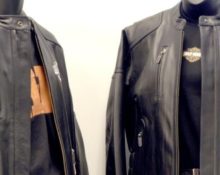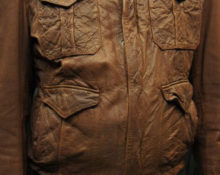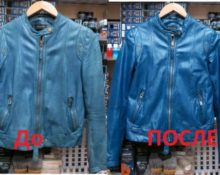High-quality genuine leather is an expensive and durable material. If you have a spacious, unfashionable leather jacket in the house, it simply needs to be given a second life. Subject to desire and free time, of course.
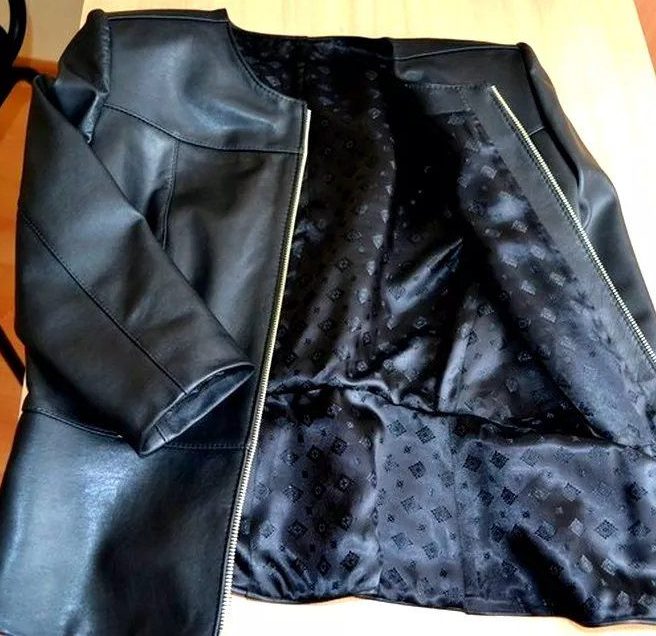
Alter a leather jacket yourself
Sewing lovers will enjoy this work. To perform the most complex knots, you can contact a professional tailor.
Complete makeover or simple change
The simplest alteration will be without changing the armhole and edging:
- Fitted side seams, length change.
- An interesting insert on the back, along with changing the length, will turn your favorite jacket into a designer item.
- You can cut off the collar, decorate the neckline and sides with finishing braid or shorten the sleeve. The jacket will change its look and style with the least amount of time and effort.
- Unworn areas of leather can serve as material for making a new item; as an addition, you can use material of a suitable or contrasting color and texture.
Complete recut, only a jacket of a larger size and volume is suitable for him. When re-cutting, the lines of the new cut are shifted inside the parts by no less than the width of the seam allowance. Traces from old stitching spoil the appearance and weaken the strength of the material.
Materials and tools
Before you start work, you need to prepare everything you need:
- To sew such a jacket, a sewing machine is suitable, which makes a high-quality straight stitch. It is desirable that the stitch width of the line be from 0.4 cm to 0.9 cm. A large finishing line looks good on leather. For internal seams, the stitch length is also larger than for fabric - 0.4-0.5 cm.
- It would be good if the machine had a Teflon foot for sewing leather. If there is no such foot, you can simplify the operation of the machine by lubricating the skin in front of the foot with machine oil. The method is suitable for dark-colored skin; some light skin will remain stained.
- Today on sale there are special machine needles for sewing leather marked LR. They differ in the shape of the tip, which allows them to cut through the skin with minimal damage.
- Any sharp tailor's scissors will be suitable for cutting, it is better that the blades are 11 or 12 inches long.
- Cutting details are applied from the front side using a marking rod on the leather. Outwardly, it looks like a ballpoint pen, the color of the line is silver. Unnecessary lines can be easily removed from the surface of the skin with machine oil.
- Leather glue will help secure the open seam allowance or zipper before stitching.
Reference! There are also hand needles for sale for sewing leather; the needle pierces it much easier than a regular one.
Rework process
- The jacket is ripped out at those seams that cannot be used in the new model.Pockets, the middle back seam, and the front seam of a two-seam sleeve can often be left unchanged.
Attention! The leather is ironed at low temperature without steam; you can use an ironing iron (a piece of cotton fabric).
- The pattern pieces are applied on the front side, so no defects will be missed. Textured irregularities can be placed in places where they will not be very noticeable. The pattern is outlined with a special rod, and special marks are applied in the right places, replacing notches on the fabric.
Attention! The pattern needs to be tested; it will be almost impossible to make further changes during sewing. Traces of old stitching can ruin the best work.
- We glue the prepared parts with non-woven material along the edge of the side, armhole, neck and bottom of the sleeves and bodice. The jacket stretches a lot when worn, duplicating will help avoid stretched hem and armholes.
Sewing order a leather item is not much different from any other item:
- We process the back and shelves separately and assemble them into a bodice.
- At the same time, we assemble the sleeves.
- We assemble the finished bodice and sleeves and cover them with lining.
When sewing seams on leather, there is no way to iron them out like on fabric, so we use prepared glue to secure the seam allowance. The allowance itself and the part along the seam are processed with glue, the allowances are laid out and pressed.
Important! After hardening, the glue should retain the plastic properties of the skin and not turn into a hard crust.
Before stitching, we tap complex knots where there are several seams with a regular hammer, or with a mallet if the leather is delicate and easily damaged.
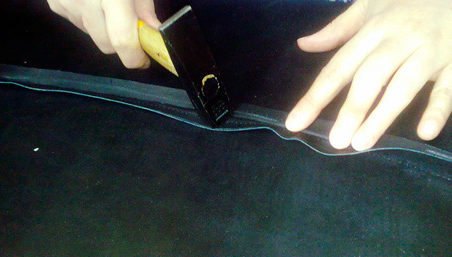
How to freshen up the appearance of a jacket
Over time, a leather jacket wears out and abrasions appear on the top layer.Fortunately, these changes are easy to fix:
- First, the jacket must be cleaned by wiping with a damp cotton cloth.
- You can soften the natural material of the upper with a colorless cream; already at this stage the jacket will take on a renewed look.
- Choose a suitable shade of paint and paint your favorite jacket at home. There are paints for sale for different types of leather and suede.
Attention! Before use, it would be good to test the paint on an area hidden from view, for example, on the inside of a pocket.
Conclusion
Leather is a very rewarding material; it wears well. Leather items look good; one or another model is always at the peak of fashion. A stylish leather jacket model can be the basis of more than one successful autumn-spring wardrobe capsule.
Unlike artificial leather, genuine leather is very pleasant to wear. It is not hot on a warm autumn day and warm on a cool day. It will protect you in rainy weather and add a stylish touch to your look on a sunny day.


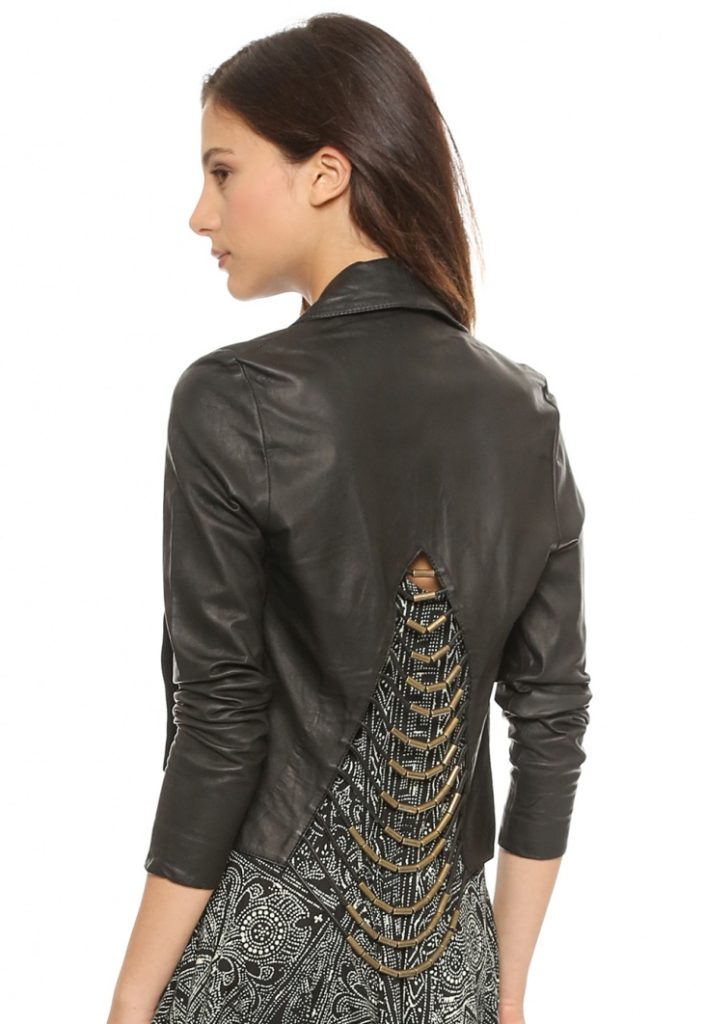






 0
0